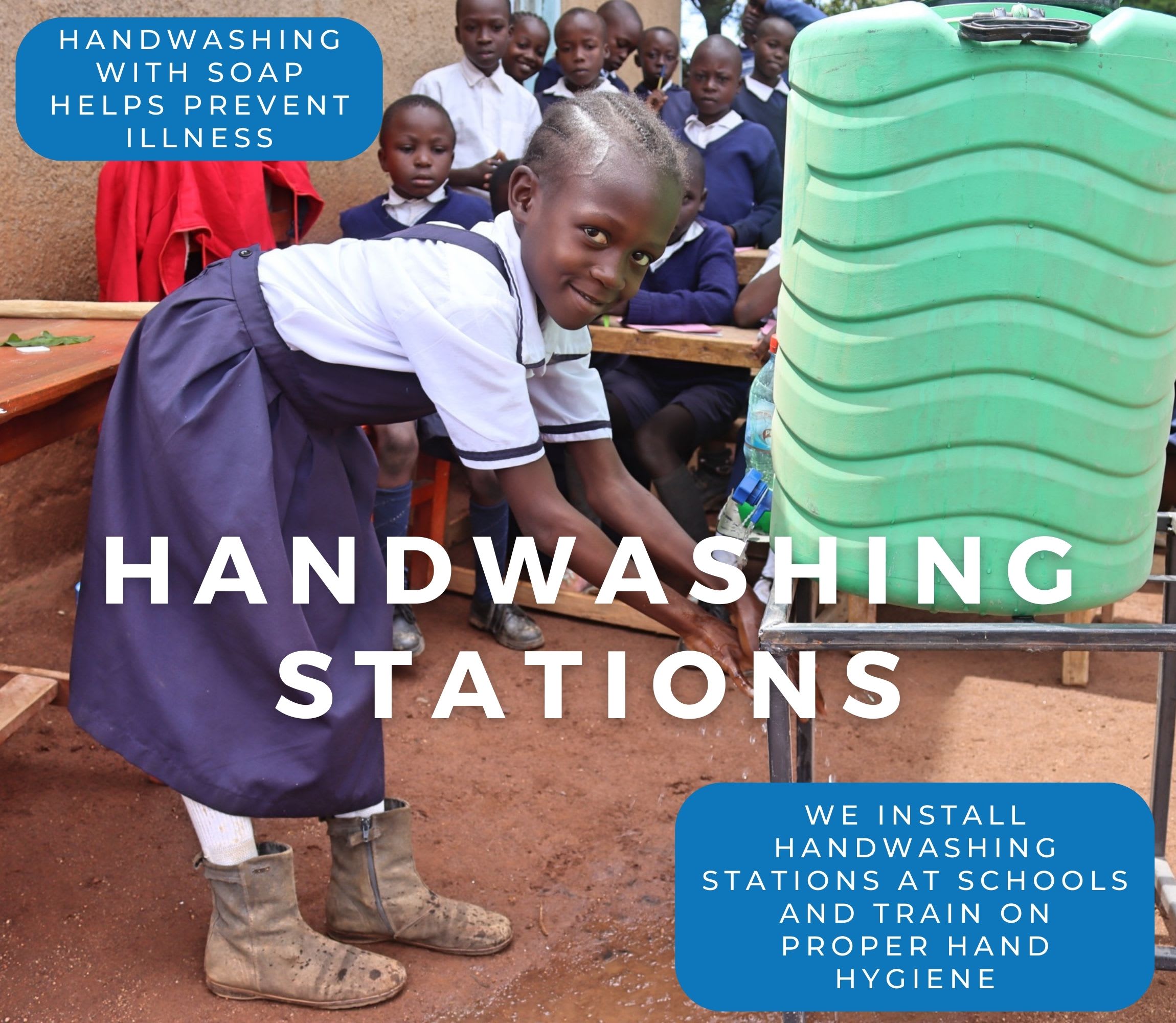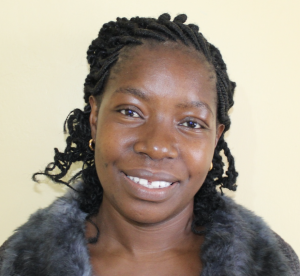At sixteen, Shayne is full of dreams. One of 139 students at St. Gerald Shitaho Polytechnic, she is passionate about dressmaking — a skill she hopes will one day help her become a professional tailor and open her own shop. But before she can even pick up her needle and thread, Shayne faces a daily challenge that steals away her time, energy, and safety: fetching water.
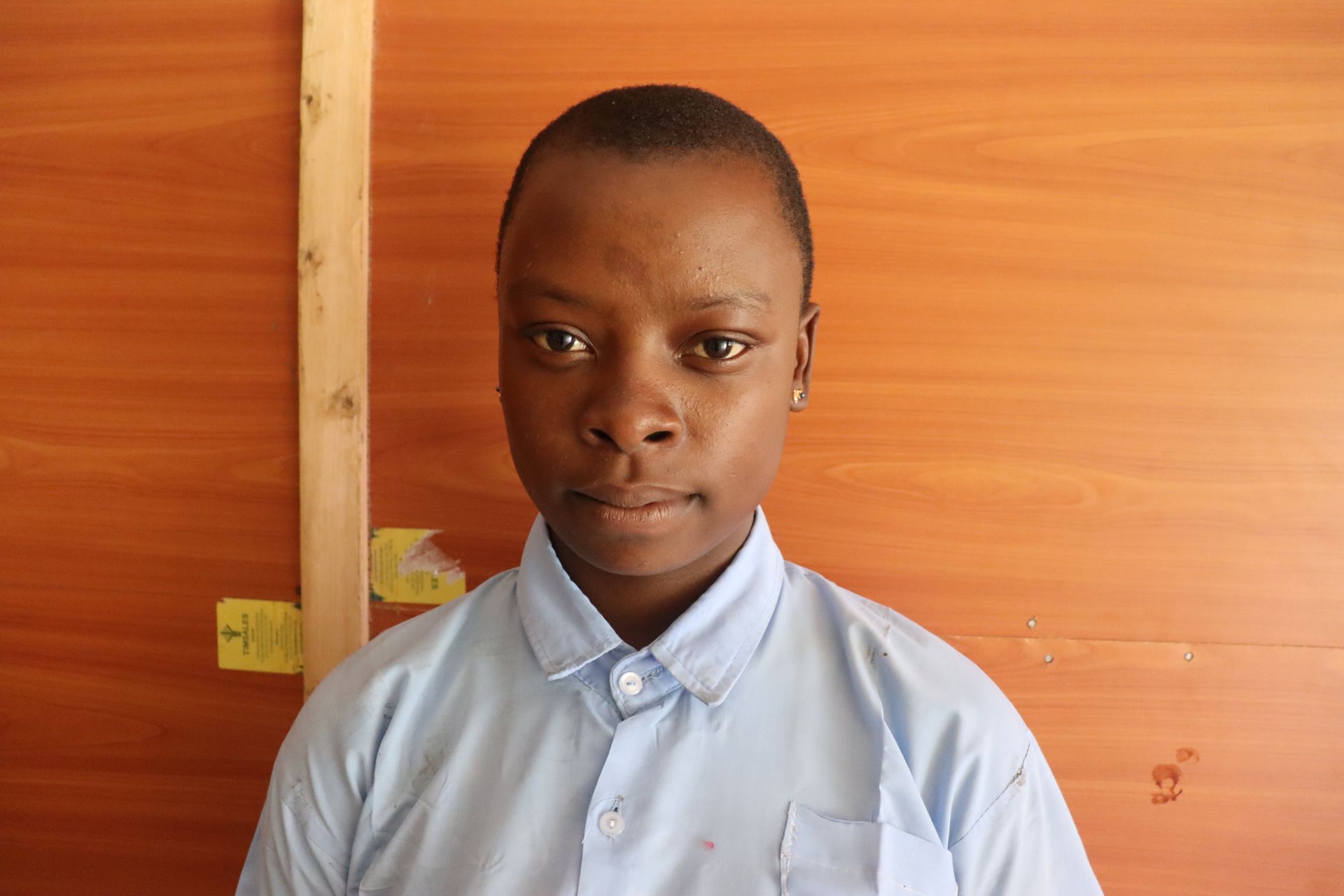
Shayne.
Every day, Shayne spends nearly two hours collecting water for her school. Sometimes it takes even longer. The unprotected spring that she depends on is shared with the surrounding community, and long queues are a constant reality — especially during the dry season.
“We have to stand and wait for our turn, and that takes a lot of time out of my day," she explains.
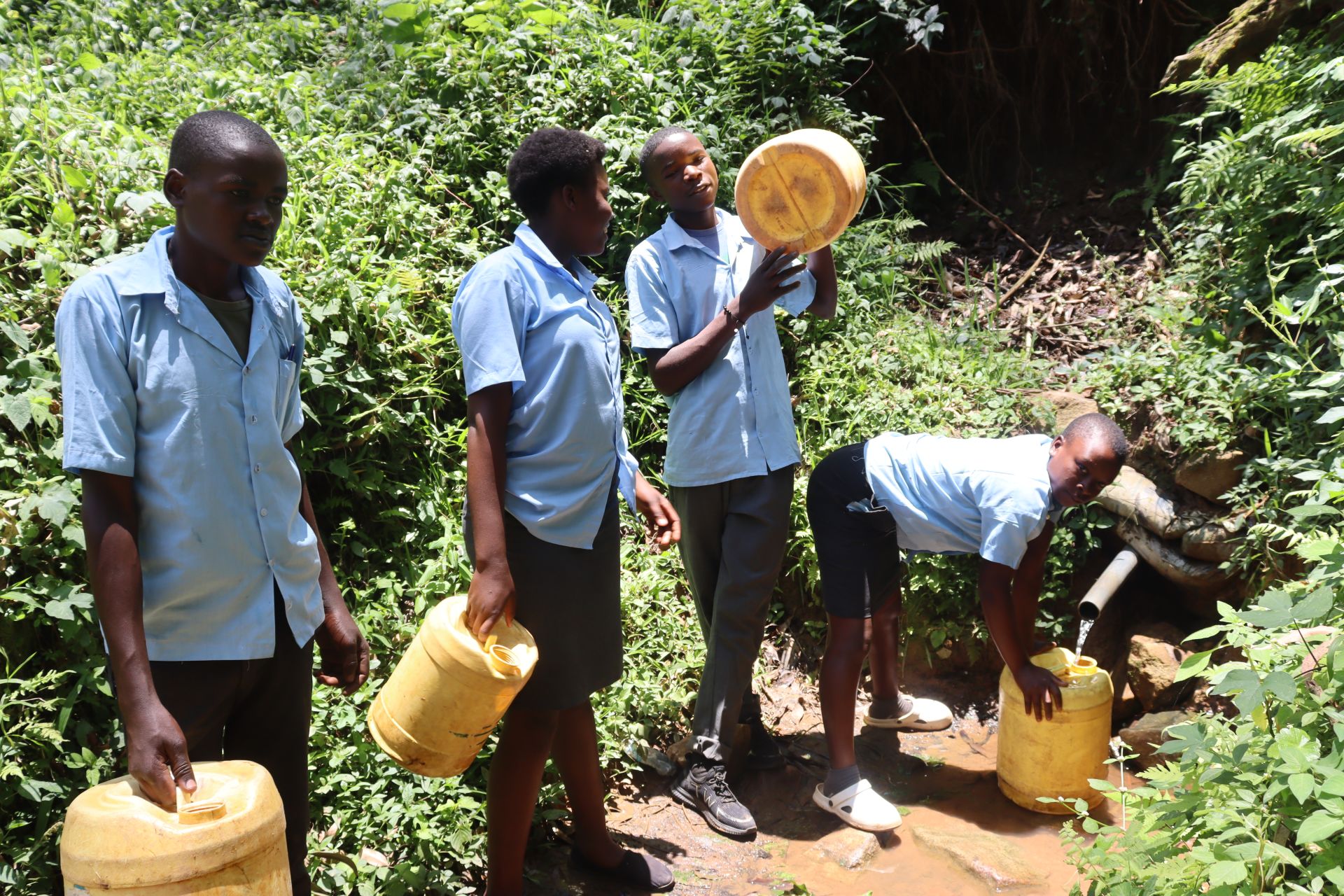
Students wait for their turn to fill their jerrycans.
The walk to the spring is also not easy. The path is steep and slippery, bordered by overgrown bushes that hide insects and snakes.
Shayne says, “Walking down with an empty container is easier, but climbing back up with a container full of water is very difficult. I often feel tired and sometimes scared of slipping. I am always worried about my safety whenever I go to fetch water, but I do not have a choice because we need water to continue with our lessons and daily activities at the Polytechnic."
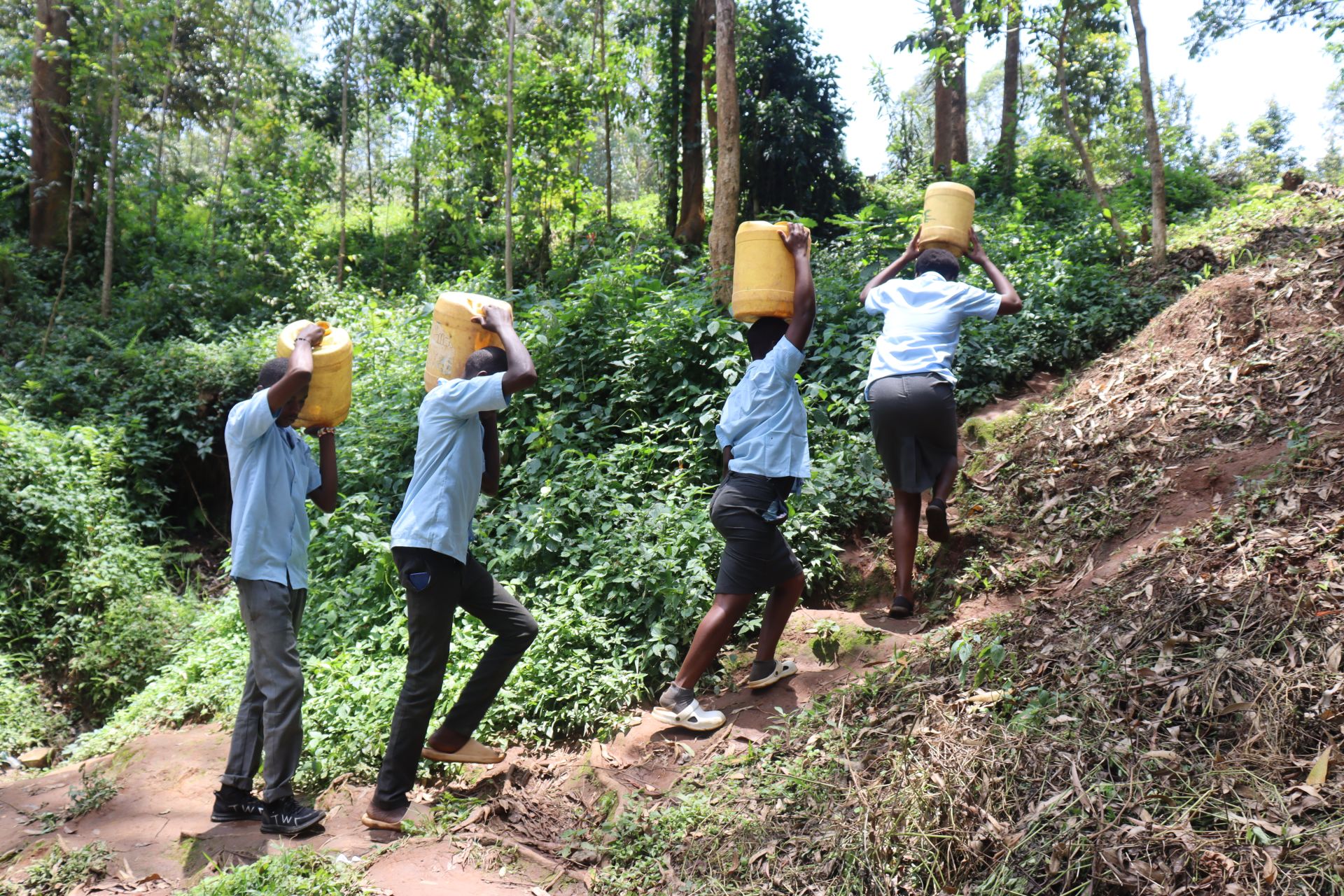
Making the difficult hike back to school.
Shayne, like many students at school, has the burden of fetching water fall on their shoulders. The task takes time away from their studies and practical lessons.
“Dressmaking needs a lot of practice,” she says. “Missing even a fraction of a lesson makes a difference negatively." The more time she spends fetching water, the less time she has to learn new techniques. She notices the impact on her exam scores and her ability to concentrate — exhaustion often replaces focus.
Beyond the exhaustion, there’s the emotional toll. The crowded spring brings tension and, at times, unkindness.
“Some people become impatient and rude,” Shayne recalls. “I have been shouted at while trying to get water, just like everyone else, but since I am younger, adults feel like I should wait for them to collect water first before me. This makes me feel small and disrespected.”
She has also seen younger children pushed to the back of the line — a scene that troubles her deeply.
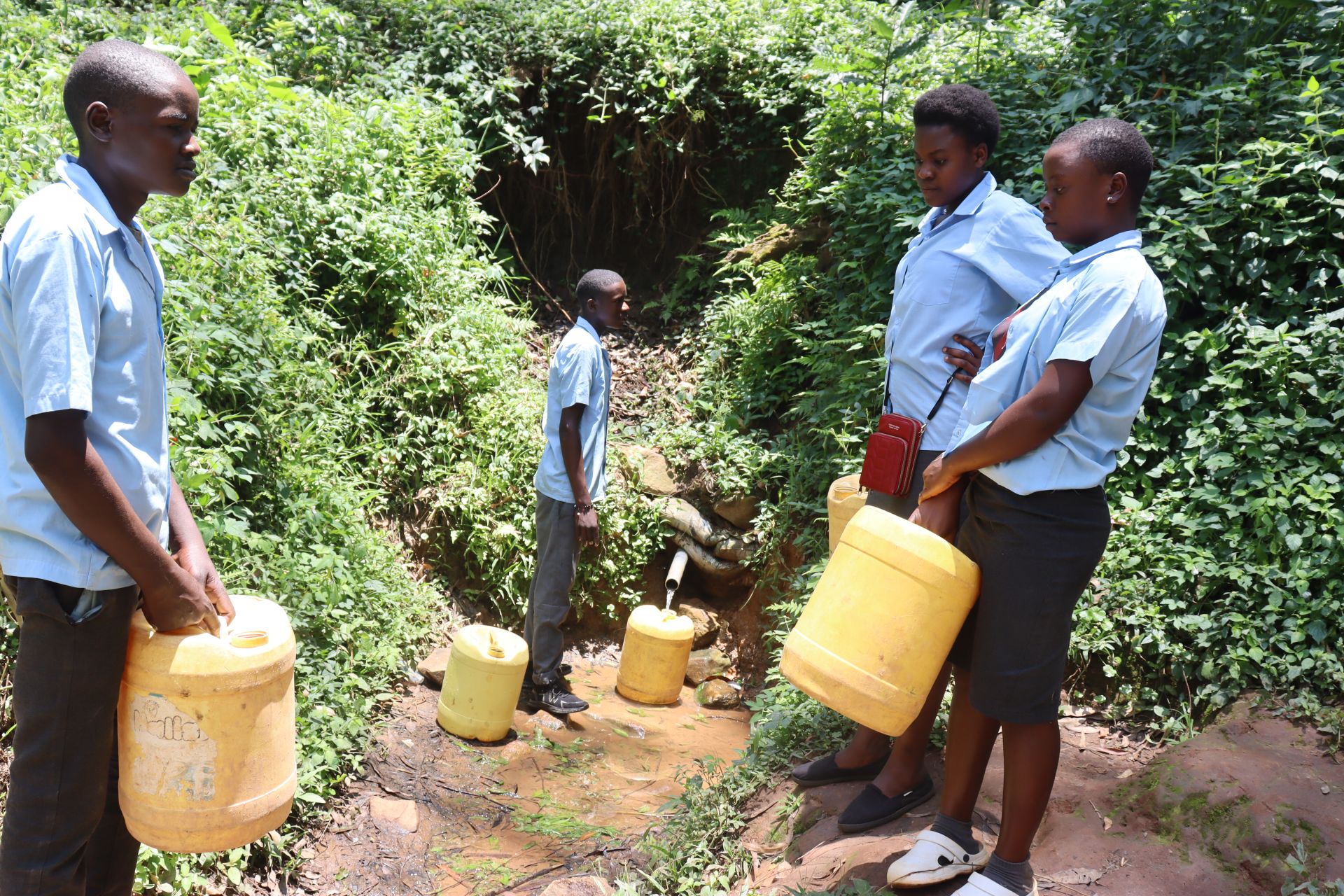
Shayne’s biggest wish is for a safe and reliable water point within her school compound. With such a facility, she and other students would be free from the dangers of the steep path and the anxiety of the spring.
“Having water in school would protect us from accidents and the feeling of being exposed in isolated places,” she says. More importantly, it would give her back precious hours every day — time she could use to study, practice, and rest.
“When I am sent to fetch water, honestly, I feel frustrated and worried. I know it is necessary, but I also know I will miss valuable class time. Sometimes, I feel anxious about the dangers at the spring. It makes me wish that we could have a safe water point at school, so I could focus on my studies and my dreams without fear and without wasting so much time," Shayne lamented.

Soaking up every moment in class.
With access to clean, nearby water, Shayne could dedicate herself fully to her passion for design — transforming fabric into opportunity. Her story is one of resilience and hope, and with your support, it can also be one of change.
Steps Toward a Solution
Schools without reliable, on-premises water access often rely on students to fetch and carry water, leading to rationing and uncertainty about water quality. The water is typically poured into a communal storage tank and used by the entire school. With children carrying water from all different sources, it is also impossible for teachers and staff to know exactly where the water comes from and how safe it is to drink.
A new water point will be located on-premises at the school to ensure accessibility, reliability, and safety for students, teachers, and staff while meeting our school coverage goals. Having water available at the school allows children to drink, wash hands, and use sanitation facilities without leaving school grounds, preventing disruptions to lessons and reducing safety risks. A dedicated source increases water availability, reduces reliance on stored water, minimizes rationing, and ensures confidence in the safety of the water. This means staff and students are healthier, and their lessons aren’t disrupted, contributing to a better education!
Our technical experts worked with the school leadership and local community to identify the most effective solution to their water crisis. They decided to drill a borehole well, construct a platform for the well, and attach a hand pump.
Well
Abundant water often lies just beneath our feet. Aquifers—natural underground rivers—flow through layers of sediment and rock, offering a constant supply of safe water. A borehole well is drilled deep into the earth to access this naturally filtered and protected water. We penetrate meters, sometimes even hundreds of meters, of soil, silt, rock, and more to reach the water underground. Once found, we construct a platform for the well and attach a hand pump. The community gains a safe, enclosed water source capable of providing approximately five gallons of water per minute. Learn more here!
Handwashing Stations
Alongside each water source, we install two gravity-fed handwashing stations, enabling everyone at the school to wash their hands. Handwashing is crucial for preventing water-related illnesses within the school and community. Student “health clubs” maintain the stations, fill them with water, and supply them with soap, which we often teach them how to make.
Latrines
We will construct two Ventilated Improved Pit (VIP) latrine blocks designed to prevent fecal disease transmission. Each latrine features a cement floor, making it easy to use and clean regularly. Three stalls will serve the girls, and three will serve the boys.
School Education & Ownership
Hygiene and sanitation training are integral to our water projects. Training is tailored to each school's specific needs and includes key topics such as proper water handling, improved hygiene practices, disease transmission prevention, and care of the new water point.
To ensure a lasting impact, we support forming a student health club composed of elected student representatives and a teacher. These clubs promote hygiene practices schoolwide and keep handwashing stations well-stocked. This student-led model encourages a sense of ownership and responsibility.
Safe water and improved hygiene habits foster a healthier future for everyone in the school and the surrounding community.
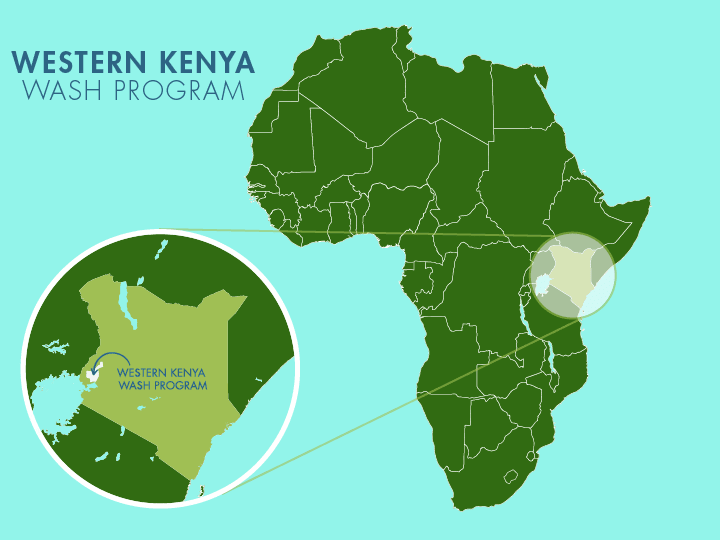
 Borehole Well and Hand Pump
Borehole Well and Hand Pump
 Rehabilitation Project
Rehabilitation Project





